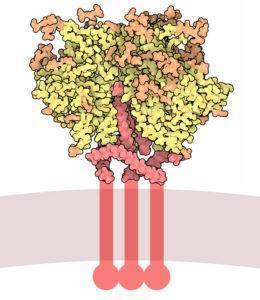The development of an effective HIV vaccine is highly dependent on using the right immunogen capable of eliciting a strong immune responses. The development of soluble recombinant HIV Envelope (Env) trimer proteins has paved the way for immunogens capable of eliciting responses targeting moderately antibody neutralization resistant viruses. In this study, the researchers used non-human primate (NHP) models to optimize immunizations strategies to produce robust neutralizing antibody responses.
Scientists generally aim to produce immunogens capable of generating Tier 2 (moderately neutralizing) responses as most viruses fall within this category of moderate neutralization-resistance. Previous HIV vaccine trials which used gp120 or gp140 forms of the HIV Env have failed to elicit robust neutralizing antibody responses. These immunogens usually resulted in the production of weakly neutralizing responses (known as Tier 1 responses). Recently, the development of soluble, stable recombinant forms of the HIV Env trimer has resulted in the induction of Tier 2 responses when tested in various animal models. Examples of these recombinant trimeric proteins include SOSIP trimers which have stabilization mutations and sequence truncation as well as native-flexible linker (NFL) trimers. However, when SOSIP trimers were tested in NHP models, only a small number of the animals developed Tier 2 neutralizing antibodies and in the animals which did produce them, it took up to 12 months.
Therefore, researchers led by Dennis Burton, aimed to optimize immunization strategies based on recombinant Env trimeric proteins. They used NHPs and varied various parameters such as the route of immunization, dose, timing, type of immunogen (SOSIP or NFL trimers), the effect of further SOSIP stabilization and the type of immunization strategy (continuous or single dose). The researchers measured germinal centre responses upon immunization as neutralizing antibody development has been shown to be associated with germinal centre activity upon immunization of NHPs.
The researchers found that subcutaneous immunizations were a better route than intramuscular routes. Longer intervals between priming and boosting of the immunizations increased the frequency of germinal centre B cells and as found in the previous study, germinal centre B cells were associated with the development of neutralizing antibody responses. Stabilization of the SOSIP trimers reduced the development of narrowly-neutralizing antibodies and continuous immunization strategies produced more robust neutralizing antibody responses as opposed to a single dose.
Altogether, this study provides an optimized immunization framework to be used in future HIV vaccine trials. However, the immunogens used here could not produce broad antibody responses capable of neutralising diverse HIV strains. Also, the immunogens did not elicit Tier 3 responses which target difficult-to-neutralize viruses. Future studies may need to focus on immunogens capable of protecting against all or most of the HIV strains in circulation.
Article by Thandeka Moyo












